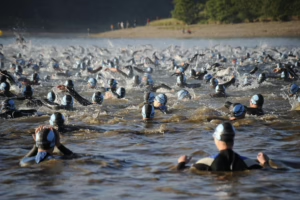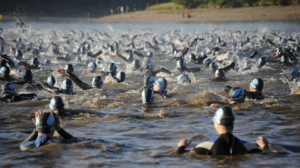From Skydiving to Gliding: Exploring the Most Thrilling Air Sports
Air sports encompass a diverse range of activities that combine the excitement of flight with the thrill of adventure. From the adrenaline-pumping rush of skydiving to the serene glides of paragliding and the unrivaled freedom of gliding, air sports offer something for everyone. In this article, we’ll explore some of the most exhilarating air sports, diving deep into their history, techniques, equipment, and the experience they offer to enthusiasts.
The Allure of Air Sports
Air sports have an innate allure, attracting not only seasoned athletes but also everyday adventurers. The rush of wind, the expansive view, and the sheer freedom of flying contribute to an unmatched sense of exhilaration. For many, these sports serve as a form of escapism—a break from the hustle of daily life, and an opportunity to see the world from a breathtaking perspective.
The Evolution of Air Sports
The history of air sports is intertwined with the advancement of aviation technology. The early 20th century saw the first attempts at powered flight, which laid the groundwork for many air sports we enjoy today.
- Early Development of Flight: The Wright brothers’ milestone achievement of powered flight in 1903 ignited interest in aviation, setting the stage for future innovations that would make flying accessible to the masses.
- Gliding and Soaring: The 1920s and 1930s brought about developments in unpowered flight, as gliders began to evolve. The development of thermals and ridge lift techniques allowed enthusiasts to soar for longer durations without power.
- Advent of Skydiving: While parachuting dates back centuries, the sport of skydiving began attracting serious interest after World War II. Military parachutists transitioned into civilian sport, leading to the formation of skydiving clubs and competitions.
Each of these advancements opened doors for new disciplines, allowing sports enthusiasts to explore the skies in various engaging ways.
Skydiving: The Ultimate Freefall Experience
Skydiving is perhaps the most recognizable of air sports, known for its dramatic freefall from thousands of feet in the sky. The exhilarating rush of jumping from a plane, experiencing freefall, and then floating down under a parachute creates a unique blend of adrenaline and serenity.
The Experience
- Tandem Skydiving: This introductory format allows newcomers to experience skydiving with an experienced instructor. The thrill begins when the plane door opens, and you leap into the open air, securely harnessed to your guide.
- Freefall: The initial freefall lasts about 30 to 60 seconds, with speeds reaching up to 120 miles per hour. This segment often fills participants with a mixture of fear and exhilaration.
- Parachute Deployment: At around 5,000 feet, the parachute is deployed, transitioning the experience from the chaos of freefall to the tranquility of descent. This portion allows for stunning views of the landscape as you glide back to the ground.
Equipment and Safety
Skydiving requires specific equipment for safety and performance:
- Parachute System: Consists of a main canopy, a reserve parachute, and an automatic activation device (AAD) that can deploy the reserve parachute if the jumper fails to do so.
- Jump Suit and Helmet: Designed to protect the jumper from wind resistance and potential hazards during descent, comfortable and durable jump suits and helmets are essential.
- Training: Comprehensive training is crucial. Most skydiving centers offer courses, including ground school, where participants learn the mechanics of jumping and parachuting.
The Community
Skydiving boasts a vibrant community, with numerous clubs and organizations worldwide. Competitions and events, like formation skydiving and accuracy landing contests, bring enthusiasts together, fostering camaraderie and friendly rivalries.
Paragliding: Dancing with the Wind
Paragliding is another popular air sport where pilots fly lightweight, foot-launched gliders. Unlike skydiving, where participants jump from an aircraft, paragliding allows for takeoff from elevated terrain, harnessing the wind’s power to soar gracefully.
The Experience
- Takeoff: Launching typically occurs from a hill or mountain. Paragliders can run off the slope or utilize thermals to gain altitude gradually.
- Flight: Once airborne, pilots can control their flight path by adjusting weight distribution and steering with lines attached to the wing. Paragliding offers a unique opportunity to experience the dynamics of the wind.
- Landing: Gliders usually land in designated fields, using flare techniques to slow descent and ensure a gentle touchdown.
Equipment and Safety
Paragliding equipment includes:
- Wing: The canopy or wing is designed for lift and maneuverability. Different types of wings are available depending on skill level and flying conditions.
- Harness: The pilot is securely strapped into a harness that connects them to the wing, allowing for freedom of movement while maintaining safety.
- Reserve Parachute: In case of emergencies, paragliders carry a reserve parachute that can be deployed if the main wing malfunctions.
The Community
Like skydiving, paragliding has a dedicated community with numerous schools, clubs, and international competitions, fostering a strong sense of kinship among participants. Pilots often share tips, experiences, and scenic locations for flying, enriching the sport.
Hang Gliding: The Classic Soaring Sport
Hang gliding involves flying a lightweight, unpowered aircraft. The pilot is suspended below a flexible wing, resembling a giant kite. This sport emphasizes technique and skill, offering a unique flying experience similar to that of birds.
The Experience
- Launching: Similar to paragliding, hang gliding typically involves launching from elevated terrain. Pilots can take off from hills or mountains, utilizing gravity and wind currents to gain altitude.
- In-flight Dynamics: Once airborne, hang gliders maneuver by shifting their body weight, experiencing the sensation of gliding gracefully through the air.
- Landing: Landing techniques vary, but the goal is to touch down gently while maintaining control of the glider.
Equipment and Safety
Hang gliding requires specialized equipment:
- Wing: Hang gliders feature an aluminum frame covered in durable fabric, creating a structure that provides lift.
- Harness: The pilot wears a harness that secures them to the frame, allowing for weight shift control during flight.
- Safeguards: Pilots are trained in safety measures, including pre-flight checks and emergency landing procedures.
The Community
Hang gliding enthusiasts are known for their camaraderie and support. Local clubs offer training programs and organize events, helping newcomers to learn the ropes and veterans to enhance their skills.
BASE Jumping: The Ultimate Leap
BASE jumping, an acronym for Building, Antenna, Span, and Earth, is one of the most extreme air sports. Jumpers leap from fixed objects rather than aircraft, employing parachutes for a quick descent.
The Experience
- Preparation: BASE jumping requires considerable planning, including choosing a suitable location like cliffs, antennas, or tall buildings. Jumpers must be highly skilled and experienced due to the inherent risks.
- The Jump: The thrill of leaping from a fixed object is different from skydiving, as jumpers often have mere seconds to deploy their parachute before reaching the ground.
- Landing: Precision is critical, as BASE jumpers must land in confined areas, requiring meticulous judgment and skill.
Equipment and Safety
BASE jumpers employ specialized gear:
- Parachute Systems: BASE jumpers often use smaller, more responsive parachutes to facilitate quick openings.
- Safety Gear: Essential gear includes helmets, protective clothing, and sometimes even wingsuits for added maneuverability.
The Community
BASE jumping has a passionate community that emphasizes safety and skills development. Often, jumpers form bonds through shared experiences and challenges, fostering a unique culture of fellow adventurers.
Wingsuit Flying: The Ultimate Evolution
Wingsuit flying takes the thrill of skydiving further by incorporating a specialized suit that adds surface area for gliding. This sport allows jumpers to soar horizontally, smoothly transitioning from freefall to glide.
The Experience
- Jumping from Aircraft or Cliffs: Wingsuit pilots can leap from either fixed objects or aircraft, enjoying a different perspective from regular skydiving.
- Flight Dynamics: A wingsuit enables pilots to control their descent through body positioning, allowing for thrilling glides across the sky.
- Landing: Landing can be complex, requiring precision and skill, often involving specialized wing suits to assist with the landing process.
Equipment and Safety
Wingsuit flying demands specific equipment:
- Wingsuit: A specialized suit designed to create lift and allow for controlled flying. Each suit varies in design, influencing performance and flying capabilities.
- Parachute System: Similar to traditional skydiving, wingsuit flyers must have a reliable parachute system to ensure a safe landing.
The Community
Wingsuit flying continues to gain popularity, drawing enthusiasts who are part of a passionate community. They often hold events and competitions, encouraging participants to share experiences and push boundaries.
Gliding: The Graceful Art of Soaring
Gliding, or sailplane flying, is a serene air sport focusing on prolonged flight. The aim is to stay aloft using natural lift sources, such as thermals and ridge lift, offering a completely different experience compared to powered flight.
The Experience
- Towing or Winch Launch: Launching can occur via a tow plane or winch, pulling the glider into the air before releasing it.
- Soaring: Once airborne, glider pilots use thermals (columns of rising air) and ridge lift (air pushed upwards by terrain) to gain altitude and extend their flights.
- Navigation and Landing: Pilots navigate using instruments and visual references, landing at designated airfields.
Equipment and Safety
Gliders are specialized aircraft that require careful maintenance and piloting skills:
- Sailplane Design: Gliders are crafted for efficiency and performance, showcasing advanced designs that maximize aerodynamic properties.
- Instruments: Pilots rely on instruments like altimeters and variometers to monitor altitude and lift.
The Community
The gliding community is known for its camaraderie, with clubs often organizing events, training, and competitions. Many gliding schools offer courses for beginners, ensuring a steady influx of new enthusiasts.
Conclusion: The Thrill of the Sky Awaits
Air sports present a captivating blend of adrenaline, skill, and natural beauty. Whether you’re plunging from a plane, gliding gracefully through thermal currents, or soaring with the wind, the sky offers endless possibilities for adventure. Each discipline, from skydiving to gliding, has its unique experiences, requiring dedication, training, and respect for the elements.
As technology evolves and safety measures improve, air sports continue to attract new participants, inspiring a sense of wonder and exploration that is universal. Whether you’re an adrenaline junkie or seeking a tranquil escape, air sports provide a path to experiencing the skies like never before.
References
- “The History of Skydiving.” United States Parachute Association, uspa.org.
- “Paragliding: A Guide for Beginners.” Paragliding Earth, paraglidingearth.com.
- “Hang Gliding: The Fundamental Techniques.” Hang Gliding and Paragliding Association, hgpa.org.
- “BASE Jumping: A Comprehensive Overview.” BASE Jumpers International, basejumpers.org.
- “Wingsuit Flying: Elevate Your Adventure.” Wingsuit Academy, wingsuitacademy.com.
- “Gliding: The Art and Science of Soaring.” Glider Pilot Association, gliderpilotassociation.org.


























Add Comment